Artichoke is tasty, but it is also a perennial of great elegance, with a clump of large bluish to greyish leaves, cottony and whitish beneath. Sturdy stems bear large heads, which form the edible part. Later the very attractive violet-blue flowers open. Needless to say, the artichoke (Cynara scolymus) has as much place in the vegetable patch as in an ornamental bed.
If planting offshoots, shoots bearing buds, is the simplest technique to introduce artichoke into your garden, it is entirely possible to sow seeds. But you will need a little patience before tasting your first artichokes.
We explain, step by step, how to sow artichoke.
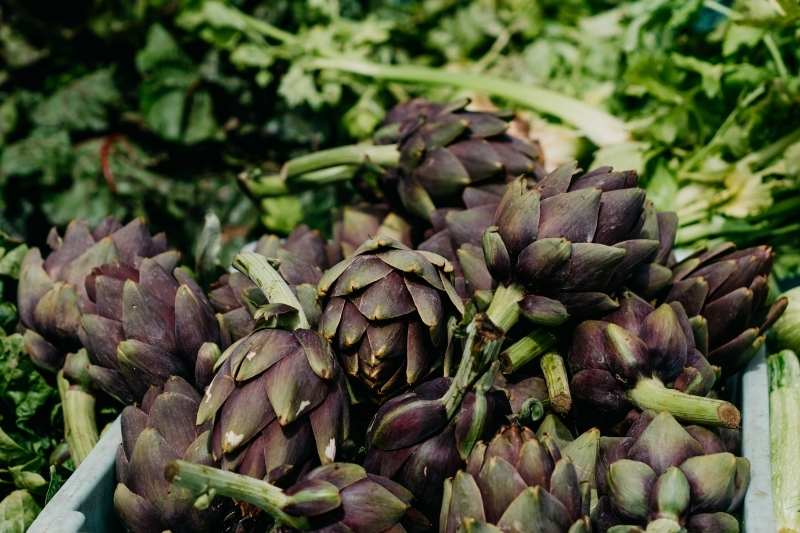
When to sow artichoke?
Artichoke is sown as early as February–March under cover. Seeds require a temperature of at least 20–22 °C to germinate. That is why sowing artichoke is done only indoors, in the house, or in a heated greenhouse. The earlier you start, the more vigorous your seedlings will be.
Sowing can also be done outdoors, without protection, but you must wait until April or even May in some regions for soil to be warm enough. This late outdoor sowing means flowering, and therefore harvest of the first artichokes, will occur the following season.
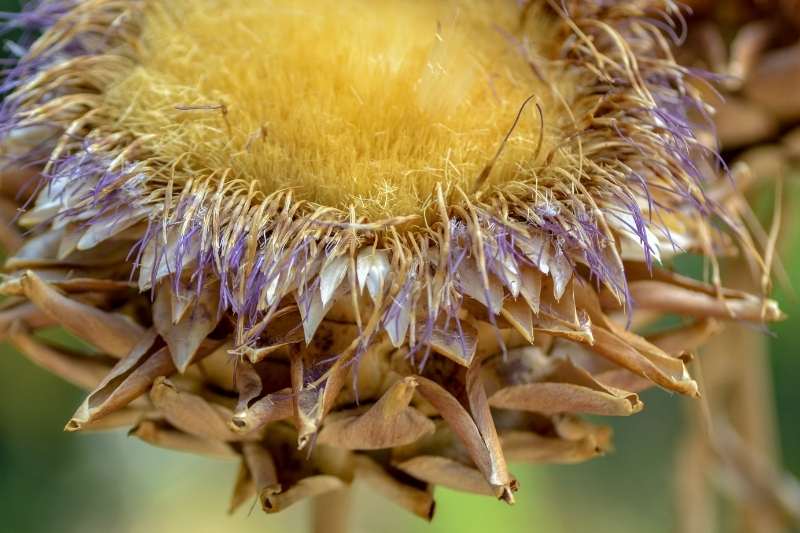
Indoor sowing of artichoke
It is recommended to start this sowing as early as February. Germination of artichoke seeds generally takes one to two weeks.
Equipment needed
- Artichoke seeds, certified healthy and chosen among different varieties (do not hesitate to try several varieties).
- Special seed compost.
- Trays, flats, alveolate trays or mini-greenhouses.
- A spray bottle.
- Plastic film or a transparent lid to maintain a stable degree of humidity.
- Labels to note variety name and sowing date.
How to sow artichoke step by step?
- Prepare chosen containers by filling them with special seed compost, leaving a small gap below the rim.
- Press the compost very lightly to make it slightly firm.
- Place one seed per cell, or sow seeds in rows in trays or flats, at about 1 cm depth.
- Cover with a thin layer of compost and press very lightly with your fingers.
- Water very gently with a fine spray using the mister to moisten the substrate without displacing the seeds.
- Cover containers with plastic film to retain moisture and warmth.
- Place seedlings in a bright room at 20–22 °C, protected from draughts.
- Keep the compost moist by regularly misting and ventilate the seedlings from time to time.
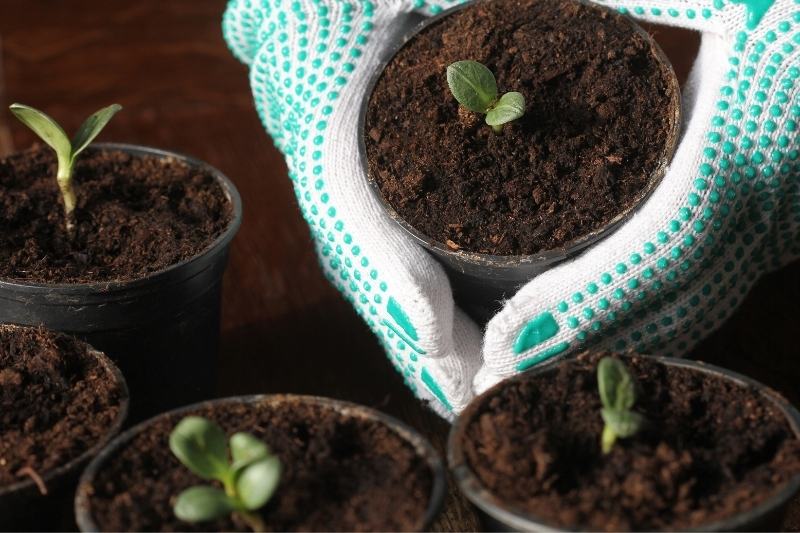
Pricking out into buckets
When artichoke seedlings have 3 to 4 true leaves, they must be pricked out into buckets.
- Obtain individual plastic buckets, special seed compost and a pencil (facultative).
- Fill the buckets with compost.
- Very carefully unpot the young plants of artichoke from the cells or lift those sown in flats or trays.
- Make a hole in each bucket with the pencil or a finger.
- Plant one young artichoke plant per bucket, burying it to the level of the first small leaves.
- Firm the compost lightly around the plants.
- Water thoroughly with the mister, avoiding wetting the foliage to keep the compost consistently moist without waterlogging.
- Place your buckets in a bright room at at least 20 °C.
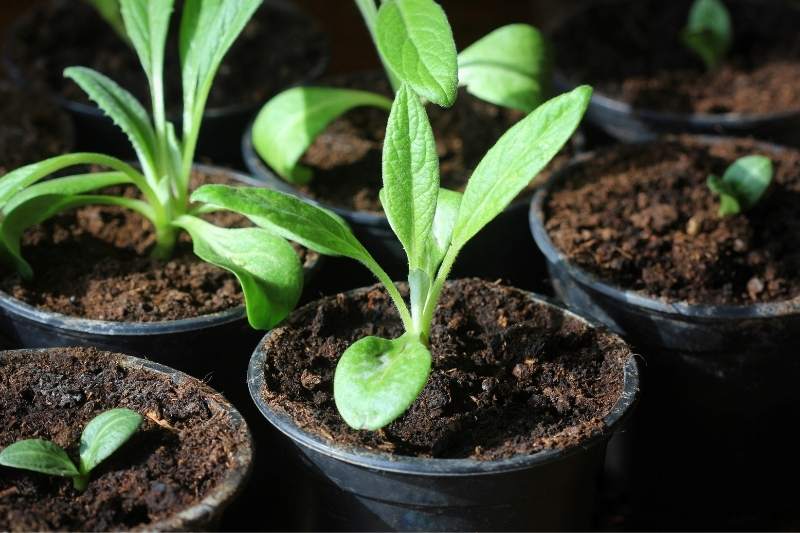
About ten days before planting out, it is recommended to put the artichoke buckets outside in partial shade during the day to harden them off.
Planting out takes place mid-May, in rows spaced one metre apart. Allow 80 cm between each young plant. Soil must be rich, light and deep and perfectly drained. It is advisable to incorporate well-rotted compost before planting.
Direct sowing of artichoke
If you live in a particularly mild climate, it is quite possible to attempt sowing artichoke directly in the ground. Soil must be well warmed (at least 15 °C) and all risk of frosts must be avoided. Seed germination will only occur after 3–4 weeks.
Direct sowing requires patience, but it guarantees more robust young plants already adapted to vegetable patch growing conditions. Similarly, harvest is likely to be later, but artichokes are often more flavoursome. However, success depends on climatic conditions.
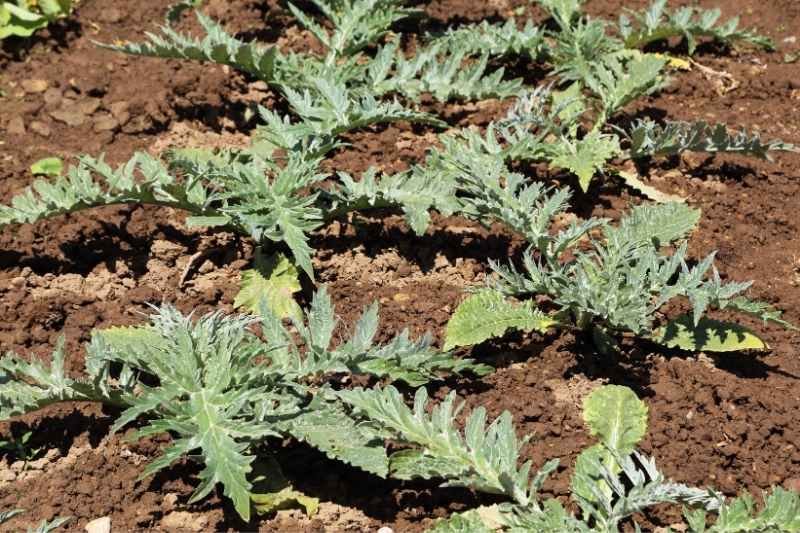
Soil preparation
- Choose a sunny, sheltered site protected from winds and cold draughts.
- Soil must be rich, well drained, deep and light. It is therefore essential to work the soil deeply and enrich it with well-rotted compost. Then loosen and level with a rake.
Direct sowing of artichoke step by step
- Make drills only 1 cm deep, spaced 20 cm apart.
- Place seeds in the drills about 10 cm apart.
- Cover with a very thin layer of special seed compost or sieved garden soil.
- Press very gently with the fingers.
- Water with a fine spray, very regularly, until seeds germinate.
Three to four weeks after sowing, thin seedlings to leave only one young plant every 80 cm. It may be wise to provide protection against slugs and snails.
































Comments